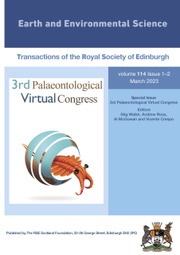Article contents
III.—Chapters on the Mineralogy of Scotland. Chapter Sixth.—“Chloritic Minerals.”
Published online by Cambridge University Press: 17 January 2013
Extract
There is no department of natural science which is so defective in its general scheme of arrangement as mineralogy; and its sectional grouping is, if possible, still more defective.
Such correlations as are expressed by the terms, “the Micas,”—“the Felspars,”—“ the Garnets,” &c., are only admissible if the substances united in such groups are included under one general formula, and function in a more or less similar manner as rock-formers.
- Type
- Transactions
- Information
- Earth and Environmental Science Transactions of The Royal Society of Edinburgh , Volume 29 , Issue 1 , 1880 , pp. 55 - 118
- Copyright
- Copyright © Royal Society of Edinburgh 1880
References
page 56 note * Great Gable, Eskdale, and Harter Fell. The fan-shaped crystalline groups of Harter Fell are very probably chlorite. The nests from the same locality, ranging up to 1 inch in diameter, composed of a “fibrous crystalline” mineral, can hardly be so. As these large nests, a single one of which would suffice for an analysis, can, with “ a little careful hammering, be taken out whole from the rock,” it is much to be regretted that they were not examined ; as a fibrous crystalline green mineral would in all probability prove to be either Kirwanite, or new.
page 72 note * The Old Red Conglomerate at Callendar contains rarely quartz nodules, with chlorite, very similar in appearance to that of Cruach Ardran.
page 86 note * Reference lost.
page 98 note * Undertaken I however understand by two of his students.
- 7
- Cited by


